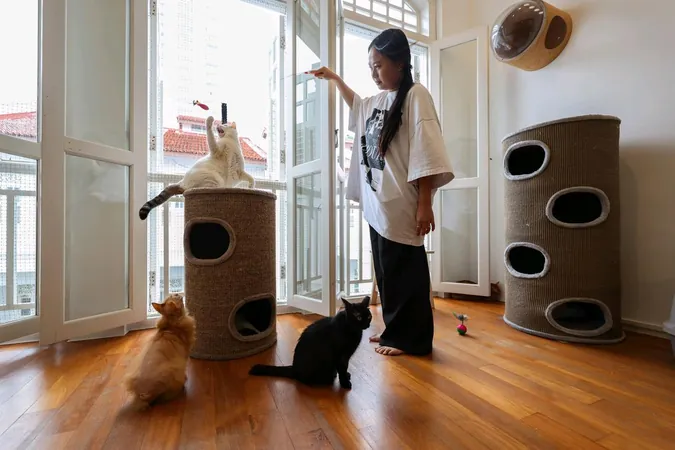
Furry Futures: Little Katpaws Transforms Rescued Kittens into Adoptable Companions
2025-07-20
Author: Mei
In the heart of Singapore, a cat haven known as Little Katpaws is paving the way for a brighter future for rescued felines. Managed by 28-year-old Eva Helina Irman, this unique sanctuary thrives in a cozy 2,000 sq ft space on Aliwal Street, designed to mimic a home environment where cats can roam freely.
Little Katpaws, established in 2016 by Eva's mother, Katrina Shamsudin, began its journey in a smaller facility down the road with just ten cats. "I was only 13 when I convinced my mother to take in some cats, and it blossomed into her passion project," Eva shared, recalling the evolutionary steps of their mission.
The shelter expanded in 2020 to accommodate a growing population of cats, even rescuing 40 felines from a hoarding situation, managing to find homes for 25 of them. While some still remain, the shelter continues its vital work.
Reflecting on their challenging beginnings, Eva noted that their prior cat boarding service became unsustainable when pet owners became unresponsive. Now, they largely rely on the kindness of donors, with contributions covering only 30% of their expenses. The duo often delves into their own pockets to ensure each cat receives essential veterinary care and proper nutrition, especially during leaner months.
Currently, Little Katpaws is home to 30 cats, with Eva setting a strategic cap of 40 to avoid overcrowding. The sanctuary is equipped with specialized rooms featuring glass doors, allowing healthy cats to thrive while keeping those infected with feline immunodeficiency virus (FIV) or feline leukemia virus (FeLV) safely separated.
These precautions don't mean the sick cats miss out on life; they're allowed to mingle in other areas at specific times, ensuring they receive ample exercise and sunshine.
Eva emphasizes that a cat shelter's top priority should be the well-being of its residents, requiring adequate space, cleanliness, and healthcare. However, a lack of national guidelines for best shelter practices makes her task challenging.
"We operate by what I’ve learned through research and experience, striving to keep our residents happy, healthy, and adoption-ready," Eva states, hopeful for future regulations to enhance their practices.




 Brasil (PT)
Brasil (PT)
 Canada (EN)
Canada (EN)
 Chile (ES)
Chile (ES)
 Česko (CS)
Česko (CS)
 대한민국 (KO)
대한민국 (KO)
 España (ES)
España (ES)
 France (FR)
France (FR)
 Hong Kong (EN)
Hong Kong (EN)
 Italia (IT)
Italia (IT)
 日本 (JA)
日本 (JA)
 Magyarország (HU)
Magyarország (HU)
 Norge (NO)
Norge (NO)
 Polska (PL)
Polska (PL)
 Schweiz (DE)
Schweiz (DE)
 Singapore (EN)
Singapore (EN)
 Sverige (SV)
Sverige (SV)
 Suomi (FI)
Suomi (FI)
 Türkiye (TR)
Türkiye (TR)
 الإمارات العربية المتحدة (AR)
الإمارات العربية المتحدة (AR)